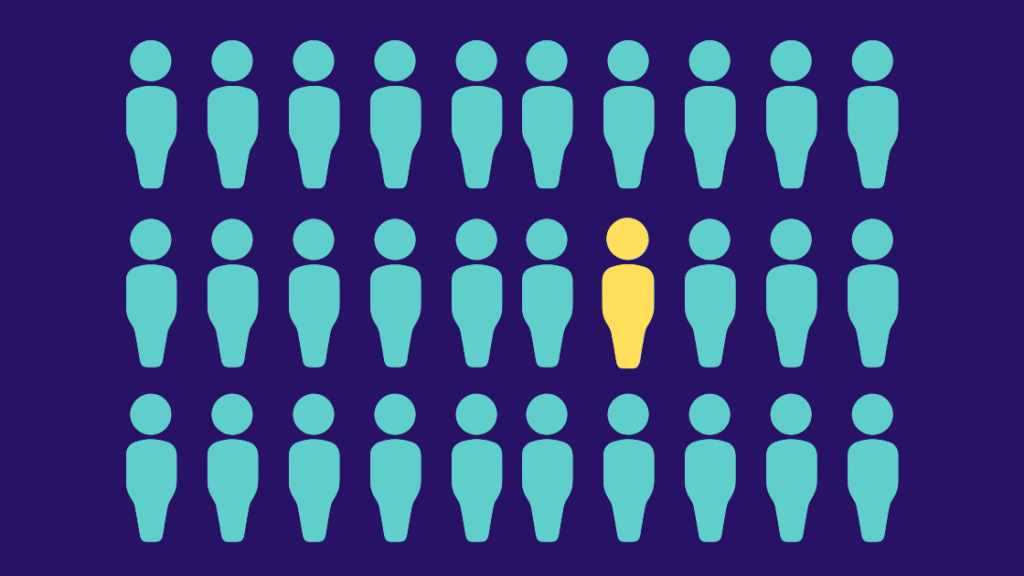For Mental Health Awareness Month, Kimberly shared a message on Instagram that resonates deeply with many: the advice she wishes she could give her younger self — embrace every part of who you are, including your mental health journey. Her words are simple yet profound: Your diagnosis is part of your story, but it doesn’t define your worth, your future, or your joy. Kimberly’s story reminds us that healing begins with self-acceptance, and no one should feel ashamed for seeking support.
View this post on Instagram
This is the power of personalized messaging in action. By sharing her personal journey, Kimberly helped spark a conversation that goes beyond awareness and fosters connection, empathy, and action. Campaigns like NAMI’s In Every Story, There’s Strength and SAMHSA’s Mental Health Awareness Month 2025 initiative demonstrate how nonprofits can drive deeper engagement by tailoring their messages to resonate with individuals on a personal level.
Leverage Personalization to Maximize Awareness Campaigns’ Impact
Personalization goes beyond simply inserting someone’s name into a message or telling a generic success story. It’s about making a deeper connection by understanding your audience’s unique experiences and perspectives. Take, for example, NAMI’s Hope Starts With Us podcast. In a recent episode, four members of NAMI Next Gen – Srihitha Dasari, Nadiyah Fisher, Anuj Gandhi, and Caitlyn Jennings – joined NAMI CEO Daniel H. Gillison Jr. to share their personal anxiety journeys. They each spoke about how different kinds of anxiety manifest in their lives and how they manage it, offering valuable insights that resonate on an individual level.
This kind of storytelling – personal and raw – demonstrates how tailored communication fosters empathy, breaks down stigma, and inspires others to share their own experiences. For Mental Health Awareness Month, campaigns like NAMI’s and SAMHSA’s leverage personalized messaging to connect with a wide range of supporters, from donors and volunteers to those directly affected by mental health challenges. NAMI’s “In Every Story, There’s Strength” campaign, for example, invites people to share their mental health journeys through the hashtag #MyMentalHealth. This initiative creates a network of authentic, user-generated content that strengthens connections, raises awareness, and encourages greater engagement. Ultimately, real-life stories help build community, inspire action, and drive outcomes like donations and volunteerism.
Utilize Data and Tools for Effective Personalization
Data is the backbone of personalized messaging. Nonprofits can harness CRM systems and AI tools to track behaviors and preferences of both donors and program participants. SAMHSA’s Mental Health Awareness Month Toolkit provides accessible, customizable resources for a variety of stakeholders, including mental health professionals, community groups, and individuals, allowing them to tailor their outreach across different platforms. This toolkit includes key messages, weekly themes, and best practices for engaging in respectful conversations, helping to ensure that each audience receives the right message at the right time.
Identify and Segment Your Audience for Targeted Engagement
In Tooele County Utah, a partnership between the Health Department and Senior Center resulted in an intergenerational community garden — a space that not only built connections but also sparked meaningful conversations about mental health and substance use. This initiative highlights the power of tailoring efforts to specific community needs, much like how SAMHSA’s campaign segments its audience to engage people in ways that resonate with them personally. By focusing on the unique interests and experiences of different groups, from it’s donors to program participants or mental health professionals, nonprofits can craft messages that foster deeper emotional connections and stronger engagement.
NAMI’s campaign goes even further by leveraging the power of personalized storytelling. The hashtag #MyMentalHealth empowers individuals to share their own experiences, ensuring that each story resonates uniquely with different segments of the audience. By creating this space for personal expression, NAMI not only raises awareness but also strengthens its community. Participants feel seen and heard, encouraging others to join the conversation and increasing overall campaign engagement.
Deliver the Right Message at the Right Moment to Reach Target Audiences
SAMHSA’s Mental Health Awareness Month 2025 campaign, which coincided with Mental Health Action Day (May 15) and National Prevention Week (May 11 through May 17), leveraged impactful data, resources, and activities like “prevention bingo” and the hashtag #NationalPreventionWeek to engage a wide audience. By aligning key weekly themes with this national observance, SAMHSA ensured the conversation remained relevant and timely throughout the month, keeping the momentum going. Whether through social media, email, or virtual events, this coordinated approach made each piece of communication feel intentional and personalized.
The success of this campaign highlights the importance of understanding your audience’s preferred communication channels. Some supporters may prefer email updates, while others may engage more on social media or through text messages. By choosing the right platform to deliver messages, nonprofits can ensure that their communications are convenient, personal, and impactful.
Organizations that embrace personalized communication, like those seen in SAMHSA’s and NAMI’s campaigns, will be better positioned to foster a more compassionate and engaged community. This, in turn, helps ensure that their messages of mental health awareness resonate far and wide. Check out Teak Media’s services page to learn how we can help do the same for your organization’s next campaign.


